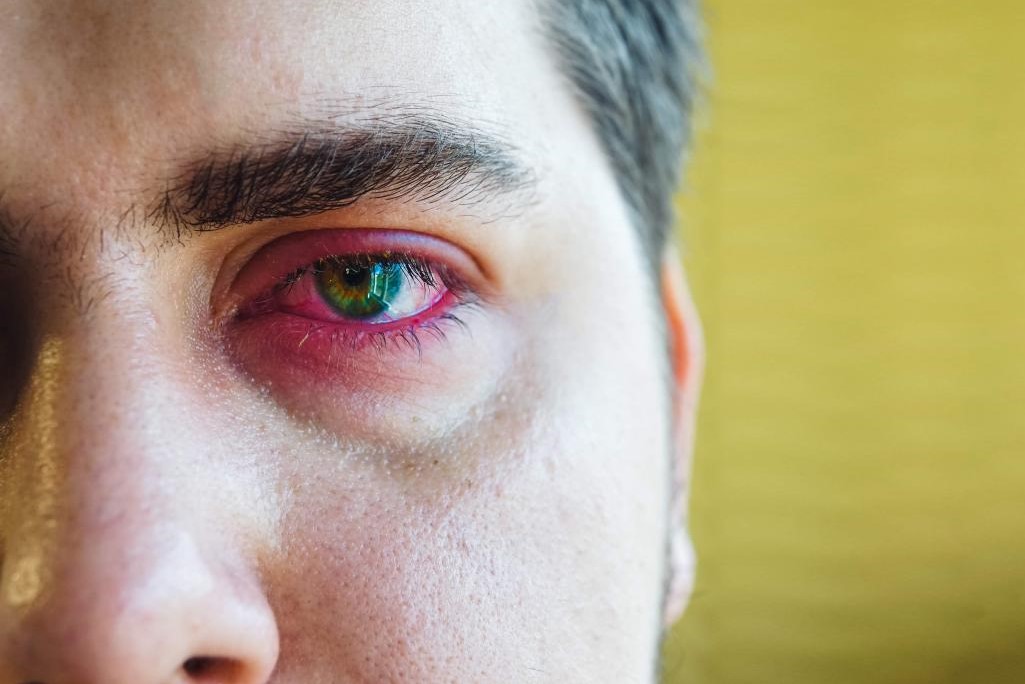
Retinal thrombosis: symptoms, diagnosis and treatment of retinal vessel occlusion
Retinal thrombosis consists of the occlusion of a retinal arterial or venous vessel, due to a thrombus or embolus
The retina is the nerve membrane of the eye, where light stimuli are recorded.
The retinal tissue is extremely rich in arterial and venous vessels.
The optic papilla is the point where the optic nerve emerges within the eyeball.
From the optic papilla, the central artery and vein of the retina start, which immediately divide into upper and lower branches of progressively decreasing thickness, up to the capillaries.
Retinal thrombosis is the occlusion of a retinal arterial or venous vessel, due to a thrombus or embolus, although a relatively rare occurrence, causes severe and, in most cases, permanent visual impairment. Retinal vessel occlusions are divided into two classes, depending on the type of vessel involved: arterial and venous.
Retinal thrombosis with arterial occlusions
Occlusion of the central retinal artery (OACR)
Central retinal artery occlusion is characterised by a sudden, total loss of vision without any pain in one eye.
Closure of the vessel causes total retinal ischaemia: the lack of blood flow and thus oxygen causes irreversible damage to the delicate retinal nerve tissue within minutes.
The occlusion of the artery is, for the most part, due to an embolus that detaches itself from atherosclerotic plaques located at the level of the larger calibre arteries located upstream of the retinal artery (especially the carotid arteries).
In fact, one of the most frequent symptoms of a transient ischaemic attack (TIA) due to the presence of atherosclerotic plaques on the walls of the carotid arteries is the sudden loss of vision in one eye.
The patient has visual blurring from one eye of short duration (30 seconds to 10 minutes), caused by emboli transiently occluding the central retinal artery.
The presence of these symptoms must therefore be given the utmost importance, in order to detect in time high-risk conditions for the development of permanent ischaemic lesions, both retinal and cerebral (stroke).
Other, rarer causes of central retinal artery occlusion are certain cardiac arrhythmias (such as atrial flutter) or increases in blood pressure in the eye due to trauma, tumours or endocrinopathies.
In cases of occlusion of the central retinal artery, medical therapy aims to pharmacologically disrupt the embolus by intravenous inoculation of fibrinolytics.
Unfortunately, however, even if therapy is started early, an effective result on the artery is rarely obtained before the damage from retinal ischaemia has become permanent.
The best therapy therefore remains the prevention of atherosclerotic plaque formation.
Retinal thrombosis with venous occlusions
Central retinal vein occlusion
Retinal venous occlusion is a much more frequent event than arterial occlusion and has a generally better prognosis.
The degree of occlusion determined by the thrombus characterises two different forms of occlusion: the oedematous form (partial occlusion of the vein) and the ischaemic form (total occlusion of the vein).
Symptoms, proportional to the severity of vessel closure, are represented by a variable sudden decrease in vision without any pain.
The risk factors most often associated with this disease are, in order of frequency: age over 50, cardiovascular disease, high blood pressure, diabetes and glaucoma.
When a central retinal vein occlusion is diagnosed, retinal fluorangiography must be performed.
This investigation makes it possible to precisely assess the site and extent of the occlusion and, above all, it is the only examination that makes it possible to distinguish the oedematous form (partial occlusion) from the ischaemic form (total occlusion), thus enabling the appropriate treatment to be identified.
In the oedematous form, fluorangiographic examinations must be carried out every three to six months in order to keep the evolution under control and, if necessary, to perform laser treatment to reduce the extent of the oedema.
In the ischaemic form, on the other hand, the patient must undergo laser photocoagulation to destroy the ischaemic areas and prevent further worsening of the disease, which can lead to blindness.
Branch occlusion of the central retinal vein (OBVCR)
Occlusion of a branch of the central retinal vein is possible.
It always occurs at a junction between an arterial and an underlying venous vessel.
The damaged retinal area and the extent of symptoms are obviously smaller than in central vein occlusion.
The risk factors associated with this minor form of retinal occlusion are age over 60, high blood pressure, diabetes and atherosclerosis.
Prevention
Based on what has been stated, it is evident that most retinal vessel occlusions occur in the presence of age-related vascular wall changes and atherosclerosis.
As a result of all these considerations, it therefore seems essential to perform at least one eye examination per year in order to identify all patients with eyes at risk of vascular accidents.
In addition, patients suffering from retinal vessel thrombosis should undergo periodic ophthalmic check-ups, in order to monitor the evolution of the disease and, if necessary, initiate appropriate laser treatment.
In conclusion, the best therapy is always that of prevention, aimed at eliminating all risk factors, both general (arterial hypertension, cardiovascular diseases, diabetes, atherosclerosis, etc.) and ophthalmic (glaucoma), linked to the onset of the vascular accident.
As mentioned above, great importance should be attached to transient, abrupt reductions in vision which, being manifestations of temporary vascular occlusion phenomena, may precede cerebral ischaemic attacks.
Read Also:
Emergency Live Even More…Live: Download The New Free App Of Your Newspaper For IOS And Android
Raising The Bar For Pediatric Trauma Care: Analysis And Solutions In The US
What Is Ocular Pressure And How Is It Measured?
Opening The Eyes Of The World, CUAMM’s “ForeSeeing Inclusion” Project To Combat Blindness In Uganda
What Is Ocular Myasthenia Gravis And How Is It Treated?
Retinal Detachment: When To Worry About Myodesopias, The ‘Flying Flies’
Deep Vein Thrombosis: Causes, Symptoms And Treatment


